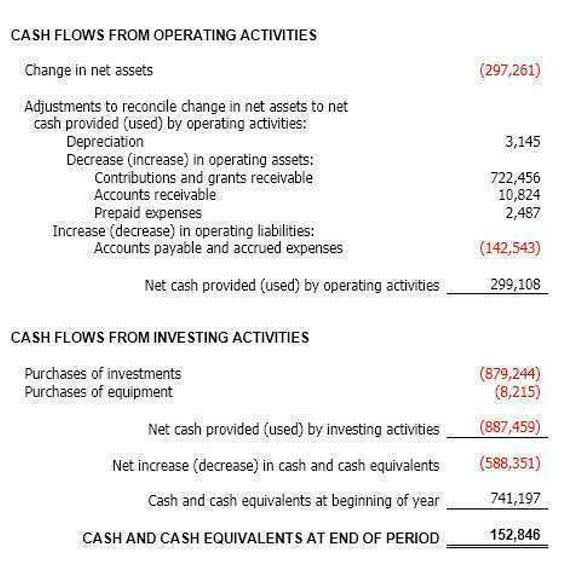
Without proper closing entries, your financial statements could become inaccurate, making it impossible to evaluate period-by-period performance. The four-step closing process transfers information from your income statement to your balance sheet, completing the accounting cycle. While traditionally done manually, modern accounting automation solutions like Solvexia now streamline this essential process, reducing errors and saving valuable time. The process of closing entries in accounting ensures the temporary accounts have a balance of zero at the end of the period. The funds must be transferred into another account, the income summary account, to bring each account balance down to zero.
Post navigation
It cash flow automates much of the reconciliation work, ensuring you catch discrepancies early and keep your accounts aligned. Each time you go through the process, you’ll feel more confident and ready to tackle whatever comes your way. I recommend taking your time here to ensure everything adds up correctly. The sooner you spot discrepancies, the easier it is to correct them before the closing period. First things first—make sure your accounts are regularly reconciled.

We and our partners process data to provide:
If there are any discrepancies, you’ll need to resolve them before Quickbooks year-end closing. Double Entry Bookkeeping is here to provide you with free online information to help you learn and understand bookkeeping and introductory accounting. Now, if you’re new to accounting, you probably have a ton of questions. A, E, and F are temporary; B, C, D, G, and H are permanent.
Closing Entry: What It Is and How to Record One

You can, however, close all the expense accounts in one entry. If the balances in the expense accounts are debits, how do you bring the balances to zero? The debit to income summary should agree to total expenses on the Income Statement. After Paul’s Guitar Shop prepares its closing entries, the income summary account has a balance equal to its net income for the year.

Reconciling your bank and credit card accounts:
In the journal entry, the $18,300 receipt of cash goes on the left (debit) side of the account because Cash is increasing. In the journal entry, the $3,300 purchase of supplies goes on the left (debit) side of the account because Supplies is increasing. Journal Entries use a standard format to record transactions. That format includes the date of the transaction, the accounts being impacted by the transaction, columns for entering debits or credits, and a description line to enter the reason for the transaction. Learning how to do Journal Entries is at the core of learning accounting.
Step 1: Review Your Accounts
We want to separate out what he has put into the business from what he took Debt to Asset Ratio out of the business for several reasons (for example, taxes). When you use up an asset, we record the amount as an expense. We move $2,050 out of our Supplies (asset) account and into our Supplies Expense account.
- Then, transfer the balance of the income summary account to the retained earnings account.
- To clean the slate, the balance of the drawing account is transferred to the capital account, decreasing its balance.
- You can report retained earnings either on your balance sheet or income statement.
- Once the temporary accounts are closed to the income summary account, the balances are held there until final closing entries are made.
- Not to mention, manual entries are time-consuming, and when you’re working with dozens or hundreds of accounts, it’s a recipe for inefficiency.
- For the past 52 years, Harold Averkamp (CPA, MBA) has worked as an accounting supervisor, manager, consultant, university instructor, and innovator in teaching accounting online.
✅ Scenario 1: Sale of Property with No Mortgage and No Gain or Loss
To close the drawing account to the capital account, we credit the drawing account and debit the capital account. To close that, we debit Service Revenue for the full amount and credit Income Summary for the same. Enter the current balance in each T-account, directly under the top of the T. Enter debits on the left and credits on the right side of the T. Precede each account balance by the date of the balance, generally the date of your most recent financial statements. I imagine some of you are starting to wonder if there is an end to the types of journal entries in the accounting cycle!

- The first entry requires revenue accounts close to the IncomeSummary account.
- You might be asking yourself, “is the Income Summary accounteven necessary?
- Closing entries are made after you record all adjusting entries.
- This time period, called the accounting period, usually reflects one fiscal year.
Temporary accounts, also known as nominal accounts, are accounts that track financial transactions and activities over a specific accounting period. These accounts are “temporary” because they start each accounting period with a zero balance and are used to accumulate data for that period only. At the end of the accounting period, the balances in these accounts are transferred to permanent accounts, resetting closing entries the temporary accounts to zero for the next period. Temporary accounts track financial activity for a single accounting period and include revenue accounts, expense accounts, and dividend accounts. These accounts accumulate transactions throughout the period but must be reset to zero at the end of each accounting cycle.

Therefore,these accounts still have a balance in the new year, because theyare not closed, and the balances are carried forward from December31 to January 1 to start the new annual accounting period. In a retail business, the income summary is used as a temporary account to close revenues and expenses. It shows how the trial balance, closing entries, and financial statements construction align. You can see the impact of well-done closing entries on accurate financial reporting. Temporary accounts are accounts in the general ledger that are used to accumulate transactions over a single accounting period.
Step 4: Transfer the Income Summary Balance
In the Accounts Payable account, the $2,290 payment goes on the left (debit) side of the account because the liability is decreasing. In Transaction 5, we are now going to pay part of this bill. We know it is a partial payment because the original transaction was for $3,300 and we are paying only $2,290. When you pay a bill, your cash decreases and the amount you owe (liability) decreases (you owe less).